| dc.contributor.advisor | Universidad del Quindio-Andres Fernando Ortega Guió | spa |
| dc.contributor.author | Ortega G., Andres F. | spa |
| dc.date.accessioned | 2019-02-28T20:37:45Z | spa |
| dc.date.available | 2019-02-28T20:37:45Z | spa |
| dc.date.issued | 2015-10-02 | spa |
| dc.identifier.uri | https://bdigital.uniquindio.edu.co/handle/001/4595 | spa |
| dc.description.abstract | There are many factors contributing to declines in natural populations, such as transforming the rainforest into more homogeneous sites, due to the many forms of land management, generating fragmentation of the landscape, being the monocultures predominant agricultural practices. The continuous changes of land use affect all biological diversity. In this study we compared two types of productive agro-ecosystems (Traditional Agroecosystem vs. Polyculture) which have different agricultural practices, with the purpose of identifying variables that affect the presence of the amphibian and reptile’s species, through VES transect method and free survey, along eight samplings in each site, from May to September 2014. The richness and diversity analysis showed that there are significant differences between agro-ecosystems, being Polyculture 2.6 times richer corresponding to a sample coverage of 94.1% which was 1.8 times more diverse (1D) than the Traditional. This could be because the Agroecosystem Polyculture has a more complex horizontally and vertically structure, creating diverse environments with optimal conditions for the development of amphibians and reptiles, that prefer to inhabit areas with dense vegetation near bodies of water. These entire highlights the importance of Agroecosystems for herpetofauna sustainability within an agricultural matrix, hence the significance of knowing and divulgate them as part of the coffee cultural landscape. | eng |
| dc.description.abstract | Son muchos los factores que contribuyen a las declinaciones en las poblaciones naturales, como es la trasformación del bosque tropical en sitios más homogéneos, debido a las múltiples formas del cultivo, generando fragmentación del paisaje, siendo los monocultivos predominantes. El continuo cambio del uso del suelo afecta a toda la diversidad biológica. En este estudio se compararon dos tipos de agroecosistemas productivos (Agroecosistema Tradicional vs. Policultivo) con prácticas agrícolas diferentes para identificar variables que afectan la presencia de las especies de anfibios y reptiles, mediante transectos y método V.E.S., durante ochos salidas a cada sitio en los meses de mayo a septiembre del año 2014. Los análisis de riqueza y diversidad demuestran que hay diferencias significativas entre agroecosistemas. Policultivo fue 2.6 veces más rico a una cobertura de muestreo de 94.1% y 1.9 veces más diverso (1D) que el Tradicional. Suponemos que esto se debe a que el Agroecosistema Policultivo posee una estructura más compleja horizontal y verticalmente. Esto genera diversidad de ambientes con condiciones óptimas para el desarrollo de anfibios y reptiles, los cuales prefieren habitar zonas con una vegetación densa cerca de cuerpos de agua. Con base en esto se resalta la importancia de estos sitios para sostenibilidad de la herpetofauna dentro de una matriz agrícola, por lo cual es importante conocerlos y divulgarlos como parte del paisaje cultural cafetero. | spa |
| dc.description.tableofcontents | Resumen | spa |
| dc.description.tableofcontents | Abstract | spa |
| dc.description.tableofcontents | Introducción | spa |
| dc.format.mimetype | application/pdf | spa |
| dc.language.iso | spa | spa |
| dc.rights | Derechos Reservados - Universidad del Quindio | spa |
| dc.rights.uri | https://creativecommons.org/licenses/by-nc-nd/4.0/ | spa |
| dc.title | Composición Y Estructura De La Herpetofauna En Dos Agro ecosistemas Con Manejo Agrícola Diferente En Quimbaya, Quindío | spa |
| dc.title.alternative | Composition And Structure Of Herpetofauna In Two Agroecosystems Differing In Agricultural Management In Quimbaya, Quindío, Colombia | spa |
| dc.type | Trabajo de grado - Pregrado | spa |
| dc.rights.accessrights | info:eu-repo/semantics/openAccess | spa |
| dc.rights.creativecommons | Atribución-NoComercial-SinDerivadas 4.0 Internacional (CC BY-NC-ND 4.0) | spa |
| dc.subject.proposal | Composición | spa |
| dc.subject.proposal | estructura | spa |
| dc.type.coar | http://purl.org/coar/resource_type/c_7a1f | spa |
| dc.type.driver | info:eu-repo/semantics/bachelorThesis | spa |
| dc.type.version | info:eu-repo/semantics/draft | spa |
| dc.description.degreelevel | Pregrado | spa |
| dc.description.degreename | Licenciado en Biología y Educación Ambiental | spa |
| dc.publisher.faculty | Educación - Licenciatura en Biología y Educación Ambiental | spa |
| dc.type.content | Text | spa |
| dc.type.redcol | https://purl.org/redcol/resource_type/TP | spa |
| dc.type.coarversion | http://purl.org/coar/version/c_b1a7d7d4d402bcce | spa |
| dc.rights.coar | http://purl.org/coar/access_right/c_abf2 | spa |













